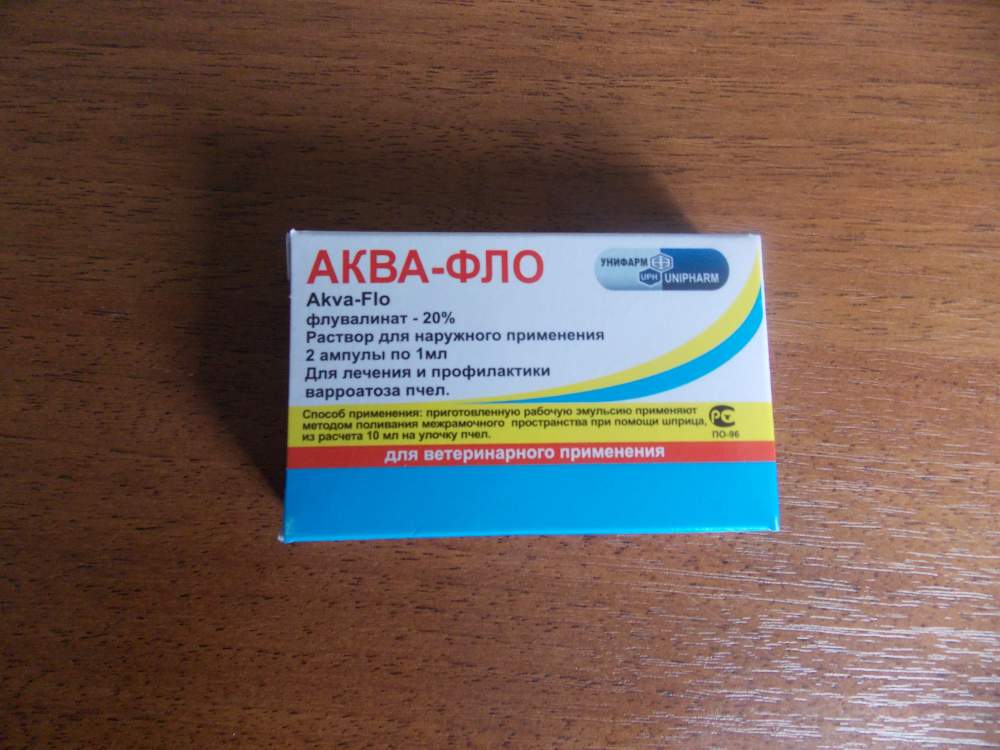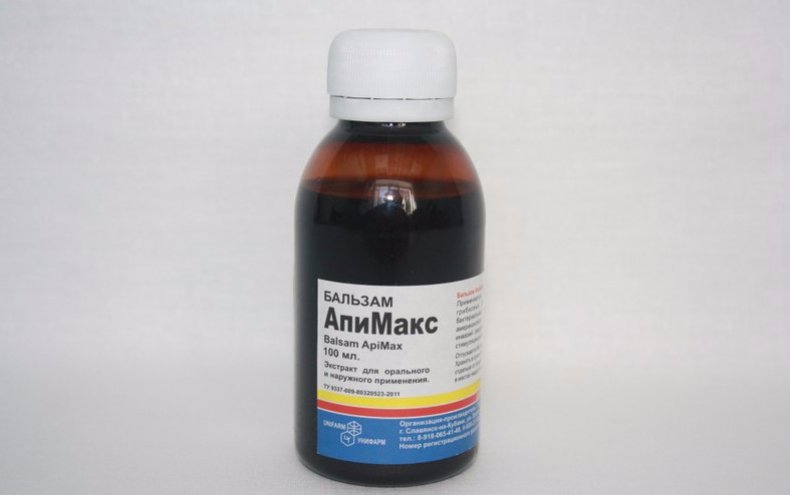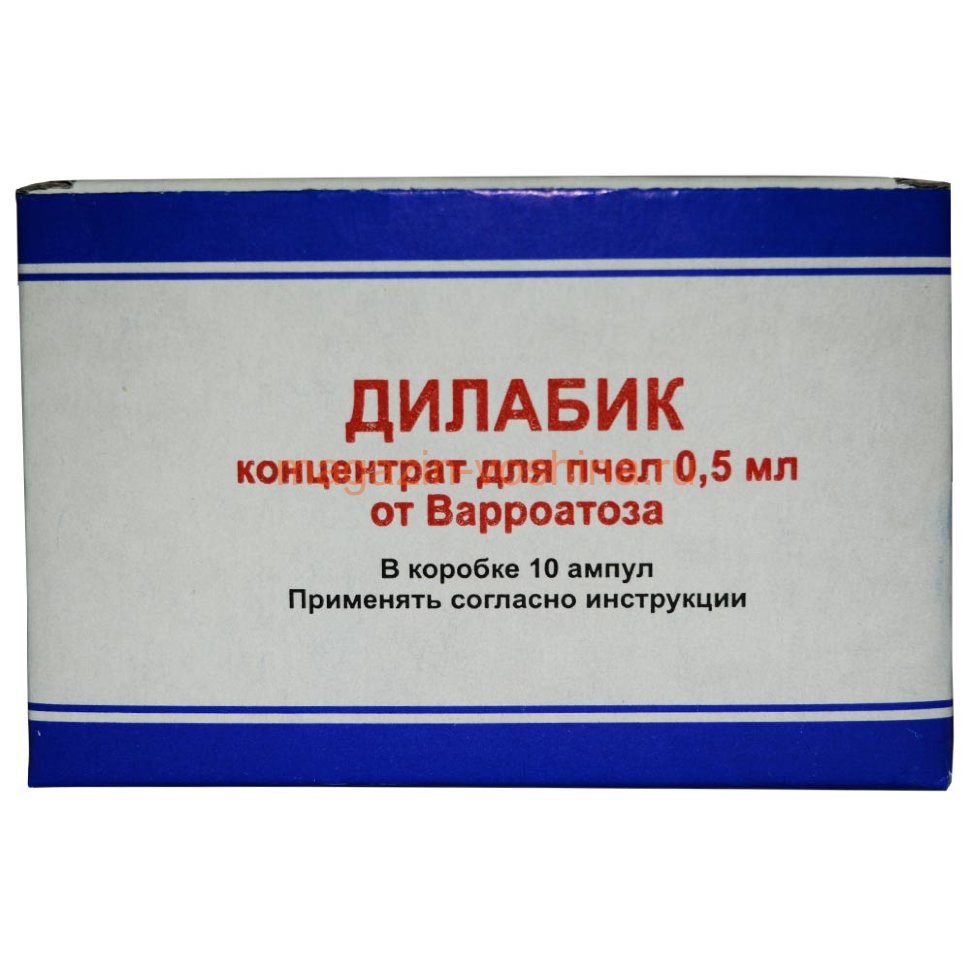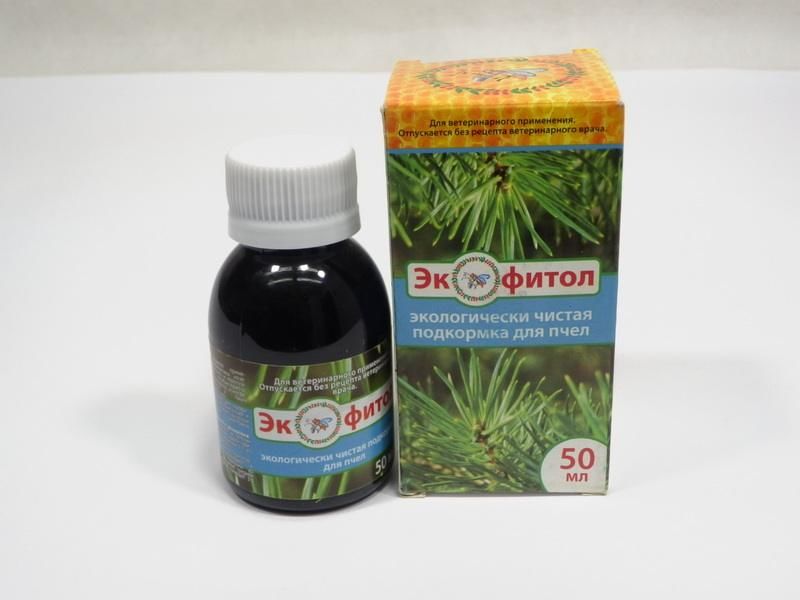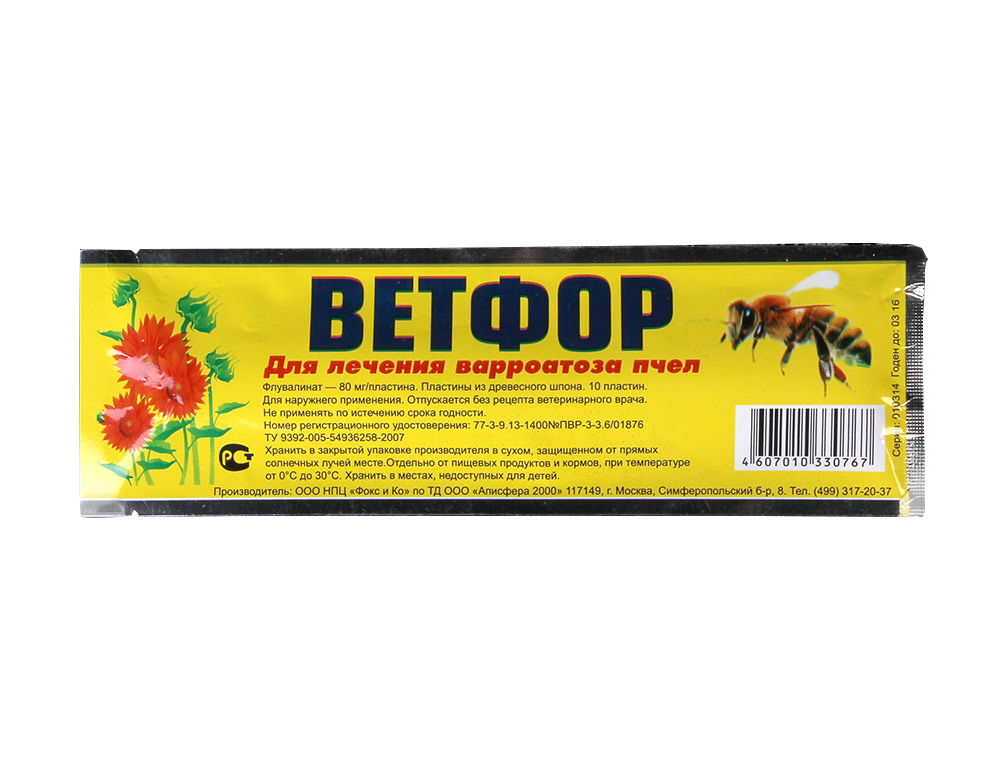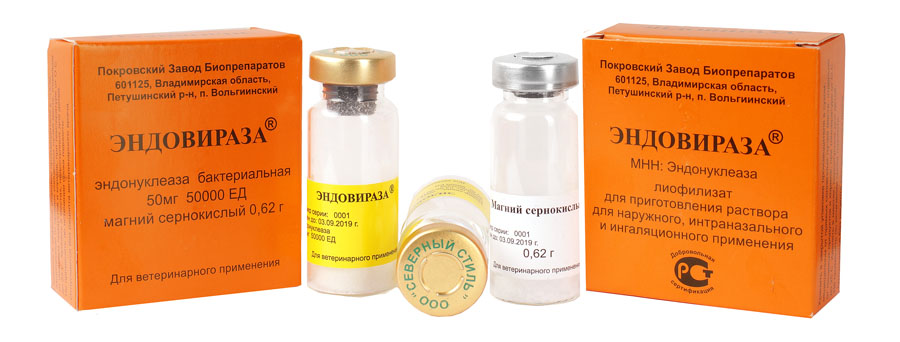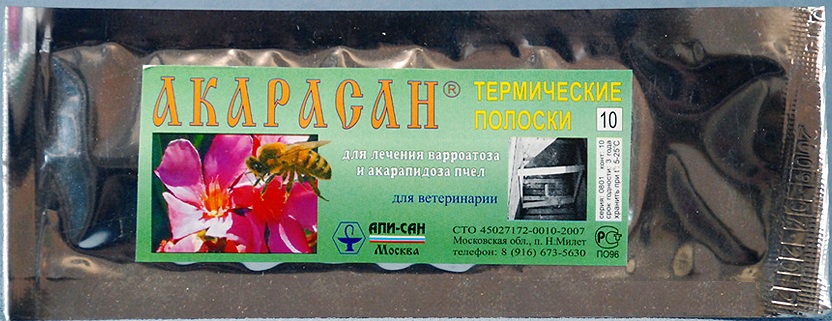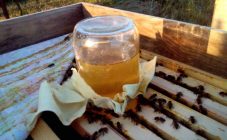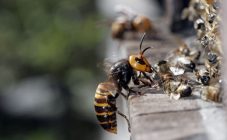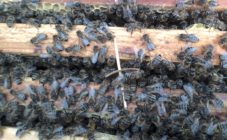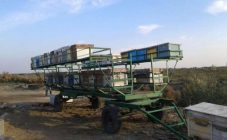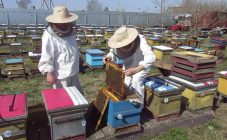Content:
Bees are, first of all, collective insects, many diseases are rather rapidly transmitted from one individual to another, as a result of which the death of the entire bee colony is possible in a short time. It is good that preparations for bees of various directions and actions are not in short supply today.
Medicines for bees have a different spectrum of actions:
- stimulate feeding;
- suppress the aggressive behavior of individuals;
- attract a swarm;
- improve the reception of queens;
- preventive dietary supplements.
Medicines
Aqua Flo
Aquaflo is a drug intended for the treatment of varroatosis, belonging to the group of soluble drugs. The active ingredient is fluvalinate.
Aqua flo for bees instructions for use: the product is diluted in clean water, in a ratio of 1 ampoule per 1 liter. The resulting mixture should be enough to process 100 frames. Repeated spraying is shown after 5-7 days. The diluted powder is stored for no more than a day.
Precautionary measures:
- ¾ lack of brood;
- ¾ temperature not lower than +15 degrees;
- ¾ honey pumping should be carried out no earlier than 15 days after processing.
Apimax
The drug has a wide range of actions, both therapeutic and prophylactic. Composition exclusively from natural ingredients: extract of garlic, echinacea, pine needles, horsetail, wormwood and hot pepper, eucalyptus juice. It is mainly used as a dietary supplement for the optimal formation of bee colonies and increasing their productivity. Apimax strengthens the immune system, which makes it possible for the body of bees to more successfully fight viral diseases.
Indications: treatment and prevention of varroatosis, acarapidosis, nosematosis, fungal, bacterial infections.
Instructions for use:
- 1 bottle is added to 10 liters of sugar syrup, the resulting mixture is given to insects by 30 ml per frame.
- for spraying hives, frames, dissolve 100 g of the drug in 2 liters of boiled water.
Safety measures: while working with the drug, you must not smoke, eat or drink, all procedures are carried out in overalls.
Ecopol
Ecopol for bees is used for the prevention and treatment of varroatosis and acarapidosis.
It has pronounced acaricidal and repellent effects against wax moths, acarapidosis and varoatosis. Produced in the form of strips of wood, natural oils act as active ingredients: menthol, coriander, thyme and wormwood.
Safety measures: the treatment with plates is stopped at least 14 days before the beginning of the main honey collection, in order to avoid the ingress of medicinal substances into the honey, the container is opened right before the procedure.
Dilabik
Delabik - effectively treats bees from varroa mites.
Dilabik for bees instruction: dilute 0.5 ml of the drug in 1 liter of boiled, chilled water, pour the solution over the interframe space with a thin stream (10 ml per street).
Unisan
Unisan is an antifungal drug that is especially active against Ascosphaera and Aspergillus. It is indicated for ascospheroses and aspergillosis of bees.
Directions for use: 1 ml of the drug for half a liter of an aqueous solution of sugar (warm, within 36-40 ° C).The solution is sprayed into frames from each side from a fine sprayer (for 1 frame - 10-12 ml). If weather conditions do not allow spraying, then the product is fed to the bee family with sugar syrup, at the rate of 1 ml of Unisan per 1 liter of sugar syrup, at a consumption rate of 250 ml per family. The procedure is carried out every seven days for 3 weeks, months.
Safety measures: honey after processing should not be eaten within 10 days after the last procedures.
Oxyvit
Oxyvit is a bacteriostatic drug that prevents the development of gram-positive and gram-negative microorganisms.
Instructions:
- It is used in the spring, up to mass honey collection, or in the summer season, after pumping out marketable honey.
- Before treatment, queens are replaced and diseased families are relocated to clean hives.
- For a family of up to 10 streets - 0.5 g of substance. Water is taken at the rate of 10-15 ml per 1 frame. The drug is first dissolved in a small dose of warm water, then supplemented with the required amount. Maximum 3-4 treatments with a week break.
Thymol
Thymol is an effective drug in the fight against varroatosis, it is a white powder with a spicy-burning taste.
Thymol in beekeeping instructions for use: you can use the drug at an air temperature of 7 to 27 ° C, during the active summer of insects. Spraying with Timol is taken from the calculation: 2.5 g for a family of 10 streets, two procedures with a week break are enough (in case of severe infection, 3 procedures are carried out with an interval of 4 days).
Top dressing with the drug is performed in a ratio of 3 g per 25 l of sugar syrup (100 g of medicated syrup per 1 frame).
Security measures: a week before honey pumping, the drug treatment is stopped.
Ekofitol
Ekofitol - helps to increase the resistance of bees against nosematosis, ascopherosis, foulbrood and viral diseases, increases the ability of the uterus to reproduce, strengthens the immune system.
Apivitamin
Apivitaminka is a complex of vitamins and amino acids, which helps to increase the growth of bee colonies, to better maturation of the uterus ovaries, to prevent the occurrence of neuromuscular pathologies, and to improve immunity.
Antivir
Antivir for bees is an excellent tool for the prevention and treatment of viral diseases.
Oxytetracycline
Oxytetracycline hydrochloride for bees has antimicrobial, antibacterial effect, prevents the growth of pathogenic microorganisms and viruses.
Stimovit
Stimovit is a drug for the prevention and treatment of viral diseases of bees.
How to use Stimovit for bees? According to the instructions, the drug is diluted in sugar syrup (5 g per 0.5 l, respectively). The syrup must be warm, 35-40 ° C. It is poured into the upper hive feeders, 300-500 ml per colony. Use 2-3 times, taking a break of 2-3 days.
Cobalt
Cobalt is a popular tablet feed additive. It has a beneficial effect on indicators of daily egg production, weight of brood at the larval stage and on insect immunity.
Vetfor
Vetfor for bees - effective in treating varroatosis.
Bisanar
Bisanar - has a pronounced acaricidal action against adult forms of Varroa jacobsoni ticks.
Bayvarol
Or Flumethrin for bees - a unique German product that effectively eliminates varroa mites.
Mauricus for bees
It is used for the prevention and treatment of varroatosis, acarapidosis and braulosis in bees.
Endoviraz
An active agent for the treatment and prevention of viral diseases of bees.
Instructions for the use of Endoglyukin
Endoglukin - indicated for the prevention and treatment of viral diseases.
Composition: the main substance of the drug is an endonuclease produced by the bacteria Serratia marcescens.
According to the manufacturer's manual, when using the drug, the following nuances and proportions must be observed:
- the essence for processing is prepared immediately before the procedure;
- for 2 bee families, dissolve 1 bottle (10,000 activity units) in 100 ml of boiled water cooled to room temperature, + add 0.1 g of magnesium chloride or 0.12 g of magnesium sulfate;
- for 10 bee families, dissolve 1 bottle (50,000 activity units) in 500 ml of water + add 0.5 g of magnesium chloride or 0.62 g of magnesium sulfate;
- for prevention, 3 procedures are sufficient, for treatment - 5, with an interval of 7-10 days;
- the air temperature at the time of the procedure is at least 14 ° C.
How to use Akarasan
Akarasan is a drug for the treatment of acarapidosis and varroatosis in bees. The main substance is fluvalinate, which has a wide range of effects on Acarapis woodi and Varroa destructor mites.
Application manual:
- families are treated at a temperature not lower than + 14 ° C;
- manipulations are done in the early morning, before the beginning of the intense summer of insects;
- all sick families are treated in one step;
- a portion of the drug for 1 family - 1 strip for 10 frames;
- families with less than 3 streets cannot be processed;
- in the fall, the treatment procedure is carried out after the honey has been pumped out, in the spring - after the flight of individuals;
- 5 days before the main honey collection, medication treatment is completed;
- with acarapidosis, 6 treatments are carried out every 7 days;
- with varroatosis, 2 treatments are carried out in a week.
The Akarasana plate is set on fire, the flame is extinguished, and in a smoldering state it is placed in the interframe space. The glowing plate should not come into contact with the wooden elements of the hive.
Treatment of bees with celandine
Celandine is a weak honey plant, poisonous. For beekeepers - an excellent remedy for fungal diseases, nosematosis and varroatosis. The collection of raw materials is carried out during flowering, dried.
Treatment of bees with celandine is possible in the following ways:
- crushed parts of celandine (both dry and fresh greens) are placed at the top of the hive;
- 100 g of a fresh plant is poured into 1 liter of boiling water, boiled for 3 minutes, closed, insisted for at least 30 minutes;
- The recipe is similar to the previous one, only use 50 g of dried celandine;
- Shredded plant paste with petroleum jelly (1: 1).
Infusion is sprayed on frames, hives, brood. Maximum - up to 5 treatments with a week break.
In addition to celandine, beekeepers actively use wormwood, nettle, calendula, horsetail and garlic.
Each medicine is unique in its own way, it differs in the way of use and the features of the effect, only the beekeeper decides which one is best for his wards.
